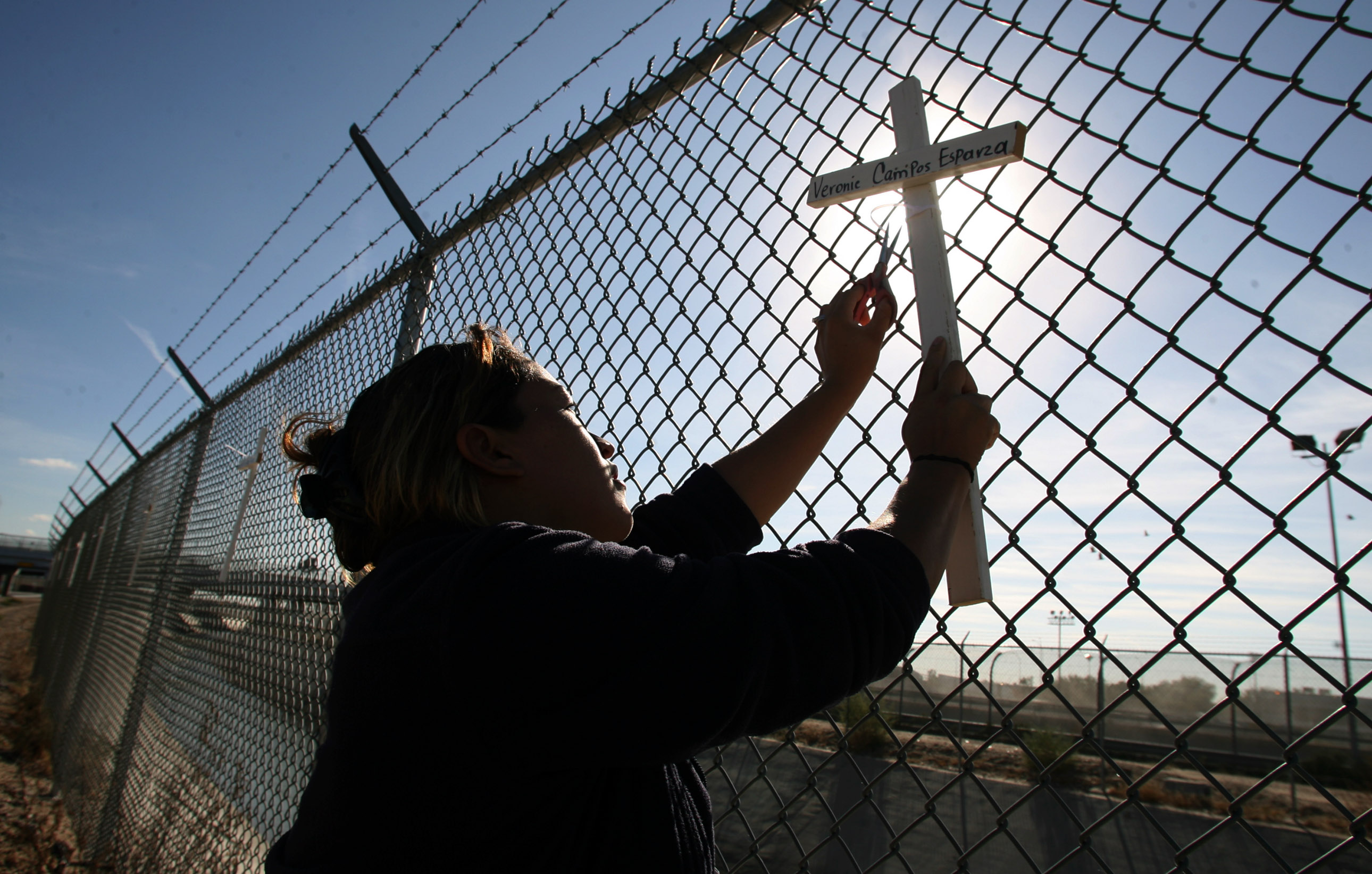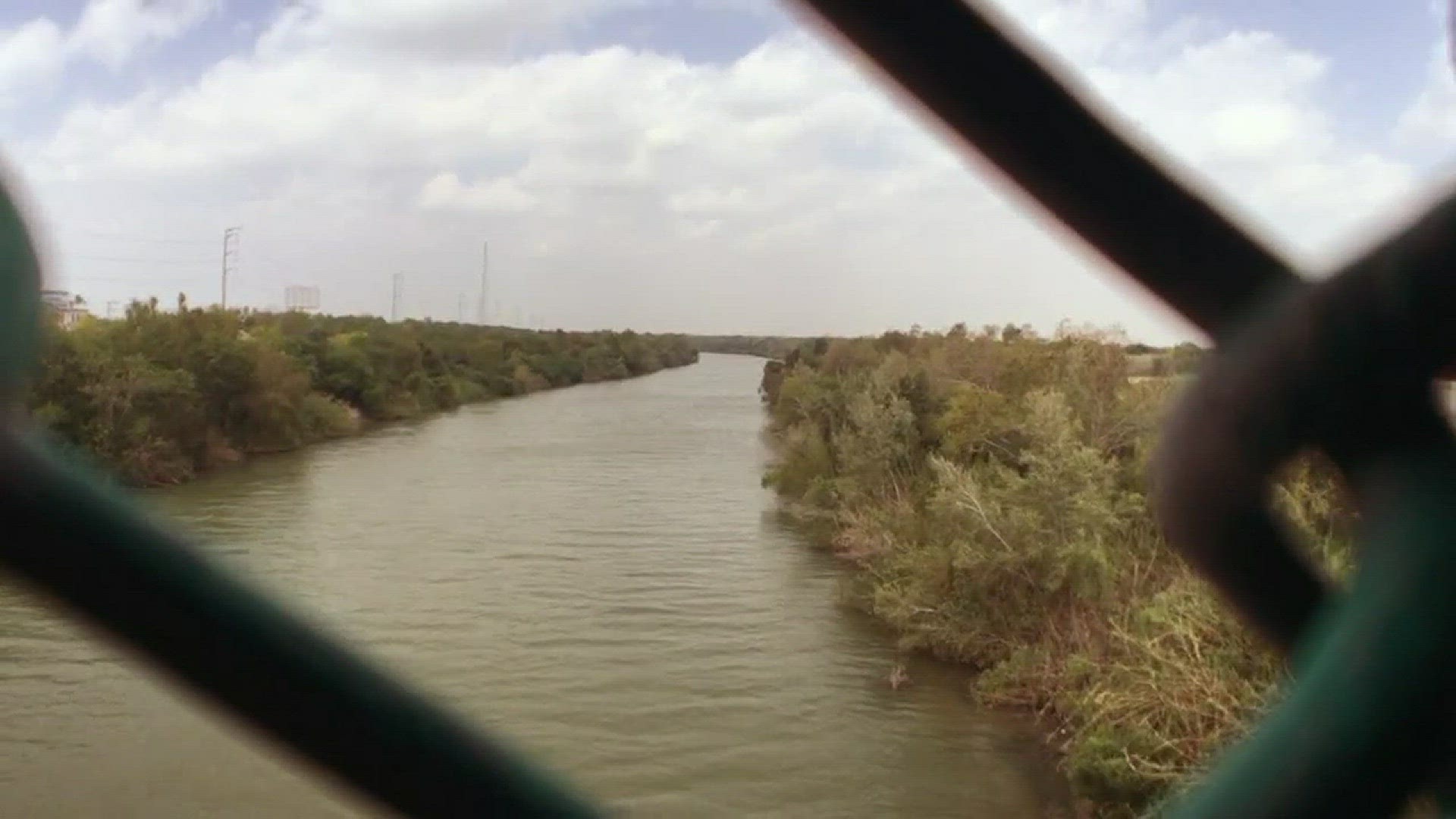The people we deport may be delivered to the hands of the Cartels. The same Cartels who put drugs on our streets.
In January, 51 people were detained by U.S. Immigrations and Customs Enforcement (ICE). They’re all accused of living in the Austin area illegally. Some of them had criminal convictions.
In April, ICE conducted another sweep. At that time, 153 people were detained. Of those, 24 lived in the Austin/Waco area, according to an ICE press release.
The KVUE Defenders traveled to the Texas/Mexico border to walk the path of those deported near McAllen, Texas.
“Reynosa doesn’t have anything. They’re reporting an accident. That’s it. No shootings in the last five hours,” said Arturo Vargas, a photojournalist from KRGV-TV in Weslaco.
Repatriation
We teamed up with KRGV to cross the border safely. Vargas has citizenship with United States and Mexico, and he knows the area around Reynosa.
This area is one of nine international bridges where Mexicans are repatriated.

Surveillance video we obtained from bridge cameras shows the United States deports many bus loads at a time.
Repatriation is the government’s acceptance back into a home country.
As migrants walk into Mexico, a sign points them to the federal migration office.
The federal government gives identification documents, basic medical care and free calls to their family in the country.
The Mexican government doesn't always secure a way for people to return to their family in Mexico.
The state of Tamaulipas
“Our personnel accompanies them to this office to avoid (migrants) from becoming victims of crime. We are working together with the state police and the federal police,” said Ricardo Calderon Macias of the Tamaulipas Regional Institute for Migrants.
The U.S. Department of State warns, "Matamoros, Reynosa, Nuevo Laredo, and Ciudad Victoria have experienced numerous gun battles and attacks with explosive devices in the past year."
The area has among the highest number of kidnappings reported in Mexico.
Macias helps direct people out of the federal migration office at the bridge to their office a block away.
“A lot of the repatriated come with no money, without the resources to eat a plate of food,” said Macias.
He said they must walk with the migrants because criminals wait outside the bridge area to target migrants crossing back into Mexico.
People such as Fermin Galan De Sama.
He crossed into the United States illegally. Galan de Sama was caught feet from the river bordering Texas.
“(I crossed) to have a better life,” said Fermin.
He told the KVUE Defenders he was headed to New York where he has family.
He said this was his fourth attempt to cross illegally. He’s not going to try again.
The Tamaulipas Regional Institute for Migrants will give people permanent identification, allowing people to work again.
Once people are processed at the institute, they can take a ride to a bus station or to a local shelter.
The office closes at 6 p.m. Deportations from the U.S run until 10 p.m.
The Reynosa shelters
Shelter workers tell us cartel operatives watch the shelter gate, waiting to target migrants.
They, too, have security watching over.
“They are everywhere. At the bridge, in the streets, in the stores where they (migrants) go gather money, at the bus station. At any place there’s people dressed as civilians, you see them like any other citizen, but he (criminal) gets close to them to take them, detain them, rob them,” said Sister Maria Nidelvia Avila Basulto, director of Our Lady of Guadalupe Migrant Home in Reynosa.
Another shelter is a few miles away.
“We aren’t going to say that we have good security, but we have a home, we have a place where every migrant that arrives can rest and have the three meals, medication and stuff like that,” said Hector Silva, owner of La Senda de Vida.
Migrants can stay at La Senda de Vida for as long as they need to.
When they’re ready, the bus stop awaits and another warning is given.
“We tell migrants to not to exit the bus station. It’s insecure. There, (criminals get migrants) inside a taxi by force,” said Dionicio Zavala Rivera of Tamaulipas Regional Institute for Migrants.
Rivera said they helped 574 people at the Tamaulipas Regional Institute for Migrants.
He expects the numbers to rise dramatically as the U.S. sets to increase deportations to Mexico.
Resources
If you are in the United States illegally, the Department of State offers a variety of Visas. Click here for information.
U.S. Citizenship and Immigration Services (USCIS) also offers humanitarian relief for those who qualify. Click here for information.
Those in the country illegally can also choose a voluntary departure.
“The departure of an alien from the United States without an order of removal. The departure may or may not have been preceded by a hearing before an immigration judge. An alien allowed to voluntarily depart concedes removability but does not have a bar to seeking admission at a port-of-entry at any time. Failure to depart within the time granted results in a fine and a ten-year bar to several forms of relief from deportation," reads the USCIS website.
Click here for more information on voluntary departure.
Immigration attorneys can assist in this process.

